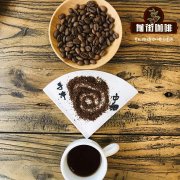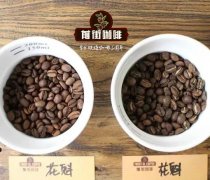The quality of boutique coffee beans what are the standards of producing countries and producing areas?

Professional coffee knowledge exchange more coffee bean information please follow the coffee workshop (Wechat official account cafe_style)
Now there is an advertisement for coffee that says, "the first generation drinks instant coffee, the second generation drinks espresso, and now let's enter the third generation to drink hand-made boutique coffee." As I mentioned earlier, it is impossible for a good baker to beautify mediocre coffee beans into high-grade coffee beans. Good beans can only be planted attentively, from the variety of trees, the way of cutting, to the harvest of fully ripe fruit. These are good beans that can only be obtained by coffee farmers and good coffee farms and producing areas.
Medium-deep roasting to deep roasting, which relies on bitterness to override the bad taste, has become the mainstream, and has been affecting most people so far, thinking that coffee should be bitter. I think this is what the questioner calls "home-grown beans".
Because of the above, gradually in the middle of the 19th century, coffee farmers began to cut coffee more attentively. Although at that time, the purpose was to make the quality of coffee better by means of germplasm, but I think it was true that we had to rely on good quality in exchange for a better price, and then broke the layers of traders and turned to be able to purchase coffee beans directly from the origin or manor, mainly to resist the massive purchase and collection of European traders.
The coffee beans with such emphasis on quality are made by Erna Knustsen, the godmother of boutique coffee, who innovatively used the word "Specialty Coffee" in the "Tea & Coffee Trade Journal" monthly magazine in 1974 to show that only in the most favorable altitude, soil and climate can we cultivate high-quality coffee with unique flavor. At the same time, it is also a comparison with large quantities of commercial low-cost coffee. Later, she and five others founded the American Fine Coffee Association in 1982, and the word "boutique coffee" was not known around the world. It was not until 2000 that she gradually moved from the niche market to the mass market.
Coffee growth is mainly distributed in the tropics with the equator as the center and latitudes between 25 degrees south and north. Coffee is grown in more than 70 countries in the world, and "boutique coffee" pays attention to Terroir (regional flavor), climate or altitude of producing areas or estates, whether coffee trees are sunny or shady, valley climate or dry, rainy or humid, temperature difference between day and night, etc., these complex weather, soil and water combinations, cut out coffee with different flavor, so without unique "regional flavor", it is not fine coffee. And reduced to fragrant, monotonous, with bitter, must add sugar in order to import the low-cost coffee.
There are too many... In addition, the top three winners of the boutique Coffee Association all fell at an altitude of about 1600, showing the famous saying that high altitude produces fine products.
From the above text, I think the biggest difference in taste is to change the inherent "bitterness" of coffee to "hierarchical", "sour", "sweet", "mellow" and "single" boutique coffee taste.
Important Notice :
前街咖啡 FrontStreet Coffee has moved to new addredd:
FrontStreet Coffee Address: 315,Donghua East Road,GuangZhou
Tel:020 38364473
- Prev

Do you need certification for fine coffee? is it SCA coffee? does it need SCA certification evaluation?
Professional coffee knowledge exchange more coffee bean information please follow the coffee workshop (Wechat official account cafe_style) before understanding the importance of SCA certification, you may want to know what SCA certification is. Don't worry, if you want to know what SCA certification is, you must also know what SCA is. SCA English full name (Specialty Coffee Association), is SCAA
- Next

The use of coffee filter what are the advantages and disadvantages of coffee filter and filter paper?
Professional coffee knowledge exchange more coffee bean information Please follow the coffee workshop (Wechat official account cafe_style). Friends who like hand brewing all know that there are many steps to make a cup of hand coffee, and you need to use a lot of utensils, such as hand pot, filter cup, filter paper, and so on. All you know is filter paper? Hand-made coffee and these fun ways to filter! For hand-brewed coffee, compared to
Related
- Beginners will see the "Coffee pull flower" guide!
- What is the difference between ice blog purified milk and ordinary milk coffee?
- Why is the Philippines the largest producer of crops in Liberia?
- For coffee extraction, should the fine powder be retained?
- How does extracted espresso fill pressed powder? How much strength does it take to press the powder?
- How to make jasmine cold extract coffee? Is the jasmine + latte good?
- Will this little toy really make the coffee taste better? How does Lily Drip affect coffee extraction?
- Will the action of slapping the filter cup also affect coffee extraction?
- What's the difference between powder-to-water ratio and powder-to-liquid ratio?
- What is the Ethiopian local species? What does it have to do with Heirloom native species?

